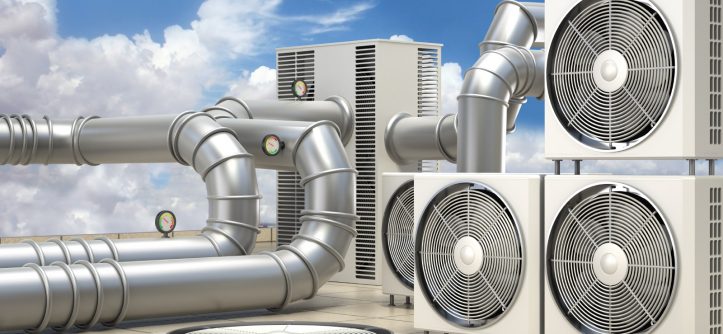A great constructed building, whether commercial or residential, is one that has a great HVAC system. Your HVAC system is the heart of heating and cooling within your building. It is simply a combination of the furnace and the air-conditioning system. If you have a perfectly working HVAC then you won’t have to worry about freezing during the cold season or feeling uncomfortable during the summer.
Here are some things that you need to know about HVAC systems.
Heating System
Your heating system can be in different forms. This can be in the form of a furnace that burns to provide heat through the ductwork. There is also another popular form of a heating system such as boilers that heat water for steam radiators, or forced-water systems with baseboard radiators, heat pumps, and electric heat. A furnace relies on natural gas or propane to operate while a boiler uses gas or oil to heat the water.

Another option for a heating system is a radiant floor or a hydronic heating system. This is through piping under a floor and is made up of flexible tubes that are filled with water or a glycol solution. This type of system is effective because it heats any kind of floor, even concrete, and is an effective method of providing warmth in a building.
Cooling System
Air conditioning comes in many forms. It can range from huge boxes that cool an entire building to portable window-mounted boxes that can be pulled out and used in cooler climates. However, installing a cooling system is a bit complicated since both the internal and external elements of the system have to be properly connected. For cooling systems, evaporative coolers are a popular choice.

Geothermal Heating and Cooling
Nowadays, a sustainable HVAC that promotes a green environment is the way to go. Geothermal HVAC results in harmony between your building and the earth beneath.
The outdoor temperature changes together with the changing seasons but the underground temperature doesn’t change as much, thanks to the natural insulating properties of the earth. An approximate of four to six feet underground, a geothermal system typically consists of an HVAC access door, an indoor handling unit and a buried system of pipes, and/or a pump to a reinjection well which capitalizes on the constant temperatures to provide “free” energy.
Unlike an ordinary heating and cooling system, geothermal HVAC system does not require the burning of fossil fuel to generate heat — it simply transfers heat to and from the earth. Moreover, electric power is used only to operate the unit’s fan, pump, and compressor.
Another perk of using a geothermal system is that it requires little maintenance. When installed properly underground, the buried loop can last for a really long time. Even the unit’s other parts such as the fan, compressor, and pump are housed indoors, which protect them from the harsh weather conditions and will help them last for many years. When it comes to routine maintenance, full access to the ducts is made possible when the maintenance personnel can just easily slip through an HVAC access door.
So when you are considering having an HVAC underground installation, aside from having the complete parts of the system, another thing to consider is the easy access towards your ducts.
For more information on HVAC grease duct panel or any other access doors, check out https://www.accessdoorsandpanels.com/hvac-access-doors/ for more information.
Tags: accessdoorsandpanels, HVAC, HVAC access door, Installation, Underground
